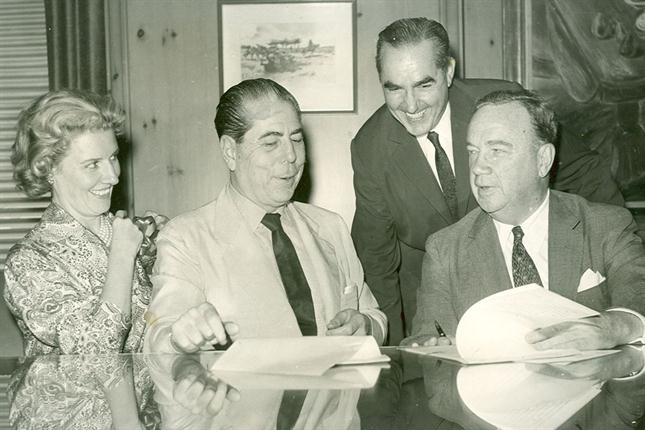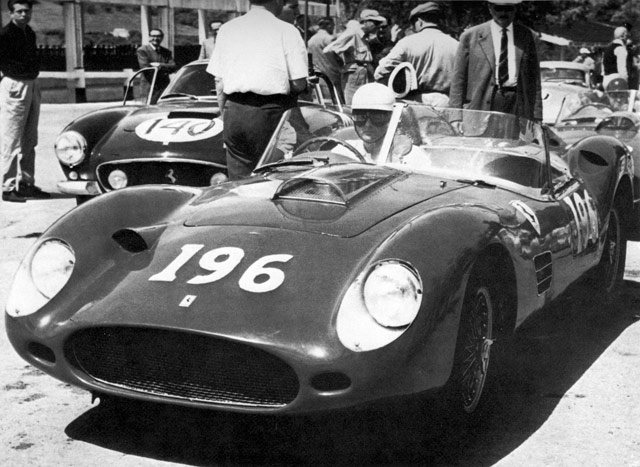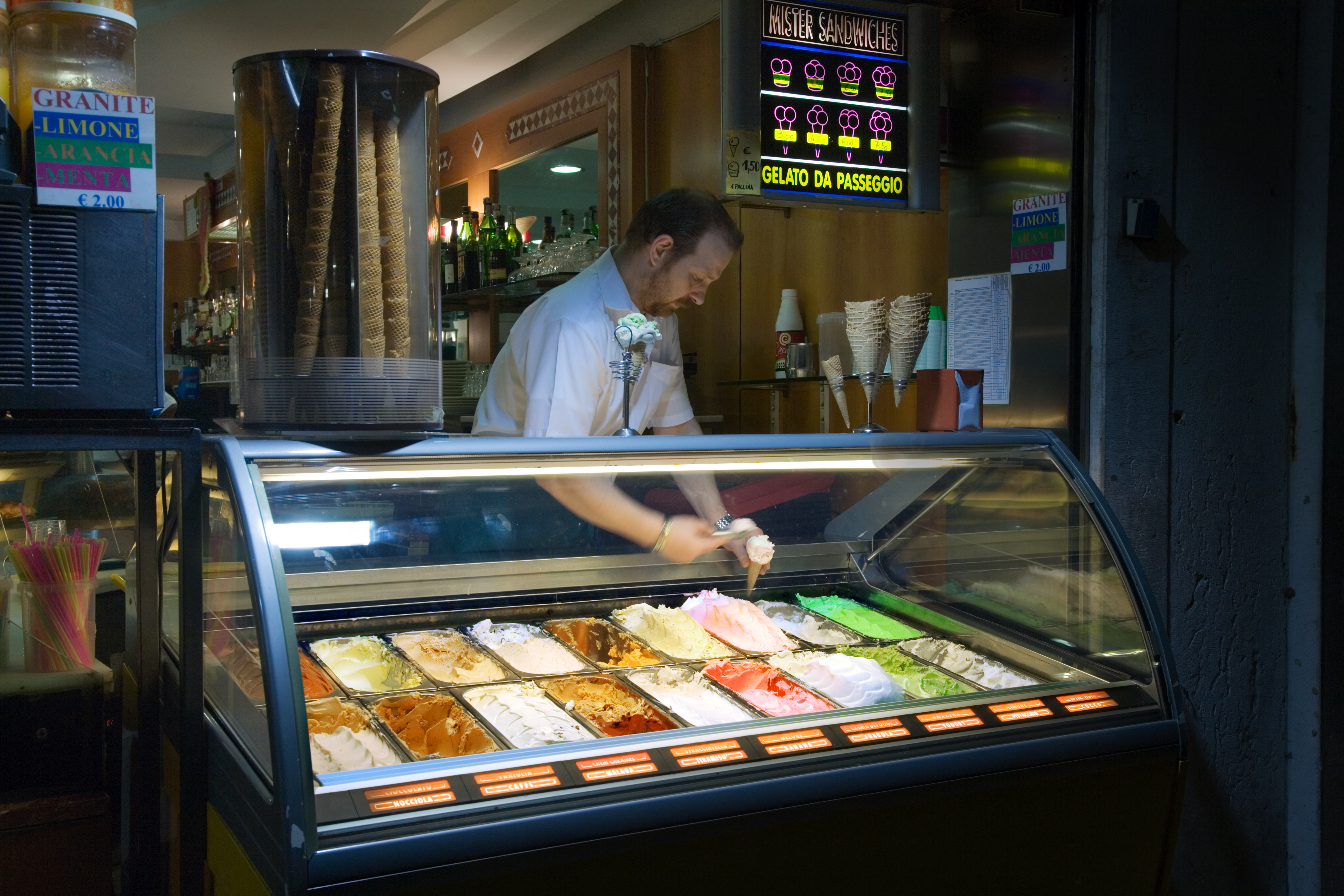|
Gregorio Pérez Companc
Gregorio Pérez Companc (born Jorge Gregorio Bazán; 23 August 1934 – 14 June 2024) also known as Don Gregorio or Goyo, was an Argentine businessman who was one of the country's wealthiest individuals, with an estimated net worth of US dollar, US$2.5 billion as of August 2021. Background He was born Jorge Gregorio Bazán in Buenos Aires on 23 August 1934. He was adopted in 1945 by Margarita Companc de Pérez Acuña, a local socialite, and enrolled at the La Salle college preparatory school, though he left before graduating. He married María del Carmen "Munchi" Sundblad Beccar-Varela, an heiress, in 1964, and in 1968, was named director of the Banco Santander Argentina, Banco Río de La Plata (at the time of the country's largest, private-sector banks), following its purchase by his family. He built much of his fortune, however, as head of Petrolera Pérez Companc, a family-based Conglomerate (company), conglomerate in oil and gas that was first established by Gregorio's adop ... [...More Info...] [...Related Items...] OR: [Wikipedia] [Google] [Baidu] |
Buenos Aires
Buenos Aires, controlled by the government of the Autonomous City of Buenos Aires, is the Capital city, capital and largest city of Argentina. It is located on the southwest of the Río de la Plata. Buenos Aires is classified as an Alpha− global city, according to the Globalization and World Cities Research Network, GaWC 2024 ranking. The city proper has a population of 3.1 million and its urban area 16.7 million, making it the List of metropolitan areas, twentieth largest metropolitan area in the world. It is known for its preserved eclecticism, eclectic European #Architecture, architecture and rich culture, cultural life. It is a multiculturalism, multicultural city that is home to multiple ethnic and religious groups, contributing to its culture as well as to the dialect spoken in the city and in some other parts of the country. This is because since the 19th century, the city, and the country in general, has been a major recipient of millions of Immigration to Argentina, im ... [...More Info...] [...Related Items...] OR: [Wikipedia] [Google] [Baidu] |
1998–2002 Argentine Great Depression
The 1998–2002 Argentine great depression was an economic depression in Argentina, which began in the third quarter of 1998 and lasted until the second quarter of 2002. It followed fifteen years of Economic history of Argentina#Stagnation (1975–1990), stagnation and a brief period of Economic history of Argentina#Free-market reforms (1990–1995), free-market reforms. The depression, which began after the 1998 Russian financial crisis, Russian and Samba effect, Brazilian financial crises, caused widespread unemployment, December 2001 riots in Argentina, riots, the fall of the government, a Sovereign default, default on the country's foreign debt, the rise of alternative currencies and the end of the Argentine peso, peso's fixed exchange rate to the United States dollar, US dollar. The economy shrank by 28 per cent from 1998 to 2002. In terms of income, over 50 per cent of Argentines lived below the official poverty line and 25 per cent were indigent (their basic needs were unm ... [...More Info...] [...Related Items...] OR: [Wikipedia] [Google] [Baidu] |
María Amalia Lacroze De Fortabat
María Amalia Lacroze de Fortabat (August 15, 1921 – February 18, 2012) was an Argentine executive and philanthropist. Life and times María Amalia Sara Lacroze Reyes de Fortabat Pourtal was born in 1921 to Amalia Reyes and Daniel Lacroze, members of prominent Argentine families; a grandfather, Federico Lacroze, developed Buenos Aires' first tramway line, in the 1880s. Her mother's family descended from Uruguay's second president, Manuel Oribe. She was raised in Paris and in 1942, having returned to Argentina, married Hernán de Lafuente, with whom she had a daughter, María Inés. The marriage, however, ended in separation in 1943.Colín, Julia. "Amalia Lacroze de Fortabat." ''Actual'' (6/1/1999) Amalia (as she was known) had ... [...More Info...] [...Related Items...] OR: [Wikipedia] [Google] [Baidu] |
Ernestina Herrera De Noble
Ernestina Laura Herrera de Noble (7 June 1925 – 14 June 2017) was a prominent Argentine publisher and executive. She was the largest shareholder of the Grupo Clarín media conglomerate and director of the flagship '' Clarín'' newspaper. She was the first woman to become director of a mainstream newspaper in South America. Life and times Ernestina Laura Herrera was born in Buenos Aires in 1925. She became a Flamenco dancer and met the founding publisher of '' Clarín'', Roberto Noble, around 1950.Rosa de Cobre: Uno, como tantos otros The two maintained a sporadic relationship until Noble and his wife, Guadalupe Zapata, were divorced in the early 1960s. < ... [...More Info...] [...Related Items...] OR: [Wikipedia] [Google] [Baidu] |
Eduardo Eurnekian
Eduardo Eurnekian (born 4 December 1932) is an Argentine billionaire businessman of Armenian heritage. As of 2024, he is Argentina’s fourth-richest person, with a net worth of $3.4 billion. Early life Eurnekian was born in Argentina to Armenian immigrant parents. His family ran a textile business that thrived for years and supplied Puma. However, in 1981, the company nearly collapsed due to Argentina’s economic deregulation under Minister José Alfredo Martínez de Hoz. Career The Eurnekian family reportedly borrowed heavily from the former Argentine small business lender, BANADE, and in 1988, Eduardo Eurnekian purchased ‘Cablevisión S.A,’ then a failing local cable TV station. His investment became increasingly lucrative following Economy Minister Domingo Cavallo’s implementation of the Convertibility Plan in 1991, which brought financial and price stability to Argentina during the 1990s. In 1994 he sold a 51% stake in Cablevision S.A. (by then Argentina's second-larg ... [...More Info...] [...Related Items...] OR: [Wikipedia] [Google] [Baidu] |
Ferrari 330 TRI/LM
The Ferrari 330 TRI/LM Spyder ( chassis number 0808) is a unique racing sports car purpose-built in 1962 by Ferrari to achieve victory at the 24 Hours of Le Mans. It was the last Ferrari racing sports car with a front-mounted engine and the last of a series of Ferrari race cars known as the Testa Rossas. The "I" in its designation indicates that the car has an independent rear suspension (''indipendente'' in Italian). Beginning in 1960 as a 250 TRI/60 Fantuzzi Spyder (chassis 0780TR), the car was badly damaged in a crash during a practice session for the 1960 Targa Florio road race (its debut). It was rebuilt, failing to finish at the 1960 24 Hours of Le Mans then finishing second at the 1961 12 Hours of Sebring, before being damaged again in its second Targa Florio outing. After finishing second at the 1961 Nürburgring 1000km and 1961 24 Hours of Le Mans, it won at the . Following Pescara, regulatory changes allowed Ferrari to rebuild 0780TR into its final form as the 330 ... [...More Info...] [...Related Items...] OR: [Wikipedia] [Google] [Baidu] |
Ferrari F50
The Ferrari F50 (Type F130) is a limited production RMR layout, mid-engine sports car manufactured by Italian automobile manufacturer Ferrari from 1995 until 1997. Introduced in 1995, the car is a two-door, two seat targa top. The F50 is powered by a 4.7 L naturally aspirated ''Ferrari 641, Tipo F130B'' multivalve, 60-valve V12 engine that was developed from the 3.5 L V12 used in the 1990 Ferrari 641 Formula One car. The car's design is an evolution of the 1989 Ferrari Mythos concept car, while Pininfarina incorporated design cues from contemporary F1 racecar designs, particularly at the front. A total of 349 cars were made, with the last car rolling off the production line in July 1997. The F50's engine predated the car; it was used in the Ferrari 333 SP for the American IMSA GT Championship in 1994, allowing it to become eligible for the stock engine World Sports Car category. Specifications Dimensions *Weight distribution, Distribution: 42%/58% (front/rear) Eng ... [...More Info...] [...Related Items...] OR: [Wikipedia] [Google] [Baidu] |
Maserati
Maserati S.p.A. () is an Italian luxury vehicle manufacturer. Established on 1 December 1914 in Bologna, Italy, the company's headquarters are now in Modena, and its emblem is a trident. The company has been owned by Stellantis since 2021. Maserati was initially associated with Ferrari. In May 2014, due to ambitious plans and product launches, Maserati sold a record of over 3,000 cars in one month. This caused them to increase production of the Maserati Quattroporte, Quattroporte and Maserati Ghibli (M157), Ghibli models (the latter's production was halted in 2023). In addition, Maserati offers the Maserati GranTurismo and two SUV models, the Maserati Levante (the first ever Maserati SUV) and the Maserati Grecale. Maserati has placed a yearly production output cap at 75,000 vehicles globally. History The Maserati brothers The Maserati brothers, Alfieri Maserati, Alfieri (1887–1932), Bindo Maserati, Bindo (1883–1980), Carlo Maserati, Carlo (1881–1910), Ettore Maserati ... [...More Info...] [...Related Items...] OR: [Wikipedia] [Google] [Baidu] |
Bugatti
Automobiles Ettore Bugatti was a German then French automotive industry, manufacturer of high performance vehicle, high-performance automobiles. The company was founded in 1909 in the then-German Empire, German city of Molsheim, Alsace, by the Italian-born industrial designer Ettore Bugatti. The cars were known for their design beauty and numerous race victories. Famous Bugatti automobiles include the Bugatti Type 35, Type 35 Grand Prix cars, the Bugatti Royale, Type 41 "Royale", the Bugatti Type 57, Type 57 "Atlantic" and the Bugatti Type 55, Type 55 sports car. The death of Ettore Bugatti in 1947 proved to be a severe blow to the marque, and the death of his son Jean Bugatti, Jean in 1939 meant that there was no successor to lead the factory. With no more than about 8,000 cars made, the company struggled financially, and it released one last model in the 1950s before eventually being purchased for its airplane parts business in 1963. In 1987, an Italian entrepreneur bought th ... [...More Info...] [...Related Items...] OR: [Wikipedia] [Google] [Baidu] |
Ice Cream Parlor
Ice cream parlors (American English) or ice cream parlours (British English) are parlor that sell ice cream, gelato, sorbet, and/or frozen yogurt to consumers. Ice cream is typically sold as regular ice cream (also called hard-packed or hard-serve ice cream), and/or soft serve, which is usually dispensed by a machine with a limited number of flavors (e.g., chocolate, vanilla, and "twist", or "zebra", a mix of the two). Ice cream parlors generally offer a number of flavors and items. Parlors often serve ice cream and other frozen desserts in cones, cups or dishes, the latter two to be eaten with a spoon. Some ice cream parlors prepare ice cream desserts such as sundaes (ice cream topped with syrup, whipped cream and other toppings) or milkshakes, or even a blend (known as a Boston shake). History While the origins of ice cream are often debated, most scholars trace the first ice cream parlor back to France in the 17th century. In 1686, Francesco Procopio del Coltelli opened Pa ... [...More Info...] [...Related Items...] OR: [Wikipedia] [Google] [Baidu] |
Jersey Cattle
The Jersey is a British breed of small dairy cattle from Jersey, in the British Channel Islands. It is one of three Channel Island cattle breeds, the others being the Alderney – now extinct – and the Guernsey. The milk is high in butterfat and has a characteristic yellowish tinge. The Jersey adapts well to various climates and environments, and unlike many breeds originating in temperate climates, tolerates heat well. It has been exported to many countries of the world; in some of them, including Denmark, France, New Zealand and the United States, it has developed into an independent breed. In Nepal, it is used as a draught animal. History of the breed As its name implies, the Jersey was bred on the British Channel Island of Jersey. It apparently descended from cattle stock brought over from the nearby Norman mainland, and was first recorded as a separate breed around 1700. The breed was isolated from outside influence for over 200 years, with a ban from 1789 to 20 ... [...More Info...] [...Related Items...] OR: [Wikipedia] [Google] [Baidu] |
Catholic Charities
The Catholic Church operates numerous charitable organizations. Catholic spiritual teaching includes spreading the Gospel, while Catholic social teaching emphasises support for the sick, the poor and the afflicted through the corporal and spiritual works of mercy. The Catholic Church is the largest non-governmental provider of education and medical services in the world. History The Catholic Church has had a long tradition of coordinating charity to the poor, something that was closely linked to the early Christian Eucharist, with the office of deacon being started for this purpose. Over time this became a part of the bishop's responsibilities and then from the fourth century onwards was decentralised to parishes and monastic orders. After the Reformation, the Church lost a large amount of property in both Catholic and Protestant countries, and after a period of sharply increased poverty, poor relief had to become more tax based. Within the United States, each diocese typic ... [...More Info...] [...Related Items...] OR: [Wikipedia] [Google] [Baidu] |






